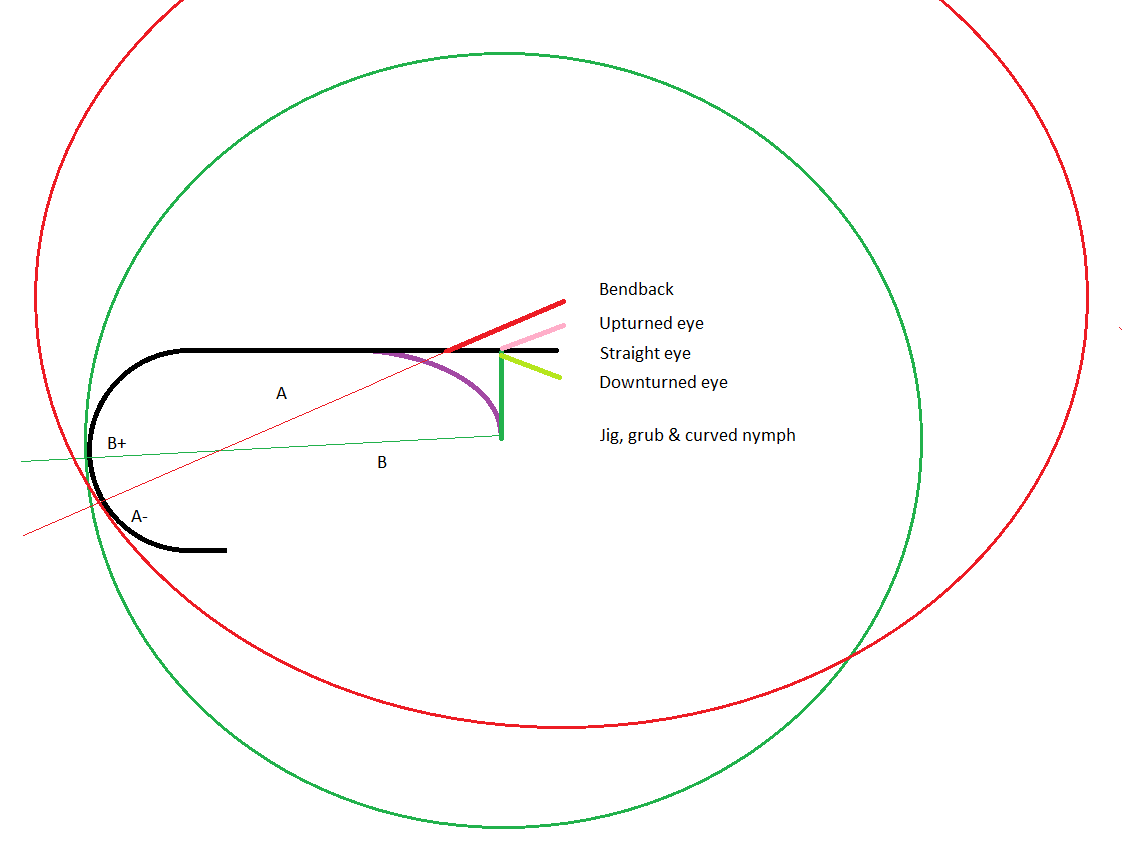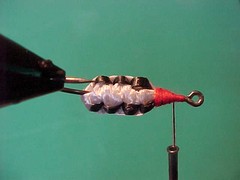Free fly tying
{{start}}
{{end}}

{{+1}}Hooks – holding mechanics (ceteris parabus){{-1}}
{{start}}
So what you can conclude from these basic observations is that the lower the eye of the hook to the bend of the hook then the higher around the bend of the hook the fish will 'hang'. This observations has significant implications for the fly tier and the fly fisher.{{end}}

{{+1}}Knitted trout flies{{-1}}
{{start}}
Knitted bodies can be interesting and life like depending on the colours and materials used and have the benefit of being flatter than traditional dubbed or wrapped bodies.{{end}}
{{+1}}Multi hitches by hand{{-1}}
{{start}}
There is of course a tool for whip finishing but if your like me you will find it much easier and neater to finish a fly of with a couple of double, triple or quad hitches done by hand or with a pen rather than the tool. The less tools you have to use the better off you are. Also if you have to whip finish say behind a bead head you will find it much easier if you can do double hitches by hand.{{end}}
{{+1}}Legs – hackle ‘beard’ type{{-1}}
{{start}}
Hackle beards are tied in to represent legs on a fly and in some cases to camouflage the point of the hook. They can be tied with almost any soft hackle or feather. In the example below I have tied the beard with a Ringneck Pheasant feather (also known as church window feathers).{{end}}
{{+1}}Tropical double weed guards{{-1}}
{{start}}
There are times when you just have to fish right into structure but every time you do you get hooked up. This is particularly so when fishing for Saratoga amongst lily pads, Barramundi amongst the mangroves and Mangrove Jacks and Bass amongst the snags. At those times to increase fishing time and save a lot of frustration I suggest you use flies with double weed guards.{{end}}
{{+1}}Neat thread heads{{-1}}
{{start}}
This can be one of the easiest things to do in fly tying or one of the hardest. And the difference between being easy or hard boils down to just one thing and that's space.{{end}}
{{+1}}Roping peacock herl{{-1}}
{{start}}
Peacock herl is the individual barbules off a peacock feather. It is wonderful fly tying material and as well as exhibiting its own natural highlight it exhibits various colors ranging from shades of greens through to various shades of blue. Individual herl can be used to dress a body on small flies but it is more common to use a number of herl to dress a body on a fly.{{end}}
{{+1}}Trout fly proportions{{-1}}
{{start}}
One of the biggest problems with tying a "good looking" and "good fishing" fly is getting the proportions correct. All to often flies are designed or tied for fisher folk not fish. When you look at a fly think about what the fish sees and what the various components of the fly are designed to do. The second problem with getting the proportions correct when tying a fly is following only part of a proven recipe without thinking through the effect of the changes you make.{{end}}
{{+1}}Body segments on flies{{-1}}
{{start}}
Most of the things we seek to imitate with flies have bodies that have some sort of segmentation. A number of techniques have been developed to imitate those body segments and often also to reinforce the fly.{{end}}
{{+1}}Dahlberg diver type tails{{-1}}
{{start}}
Dahlberg Diver tails are generally equal in length to between the length of the hook shank and two times the length of the hook shank. Avoid making tails too long because sometimes the fish will hit the movement of the tail and miss the hook completely. This is often referred to as a "short take" or "taking short". Good marabou tails are a real bonus to a big dry fly because the marabou hangs in the water and has a lot of movement.{{end}}













